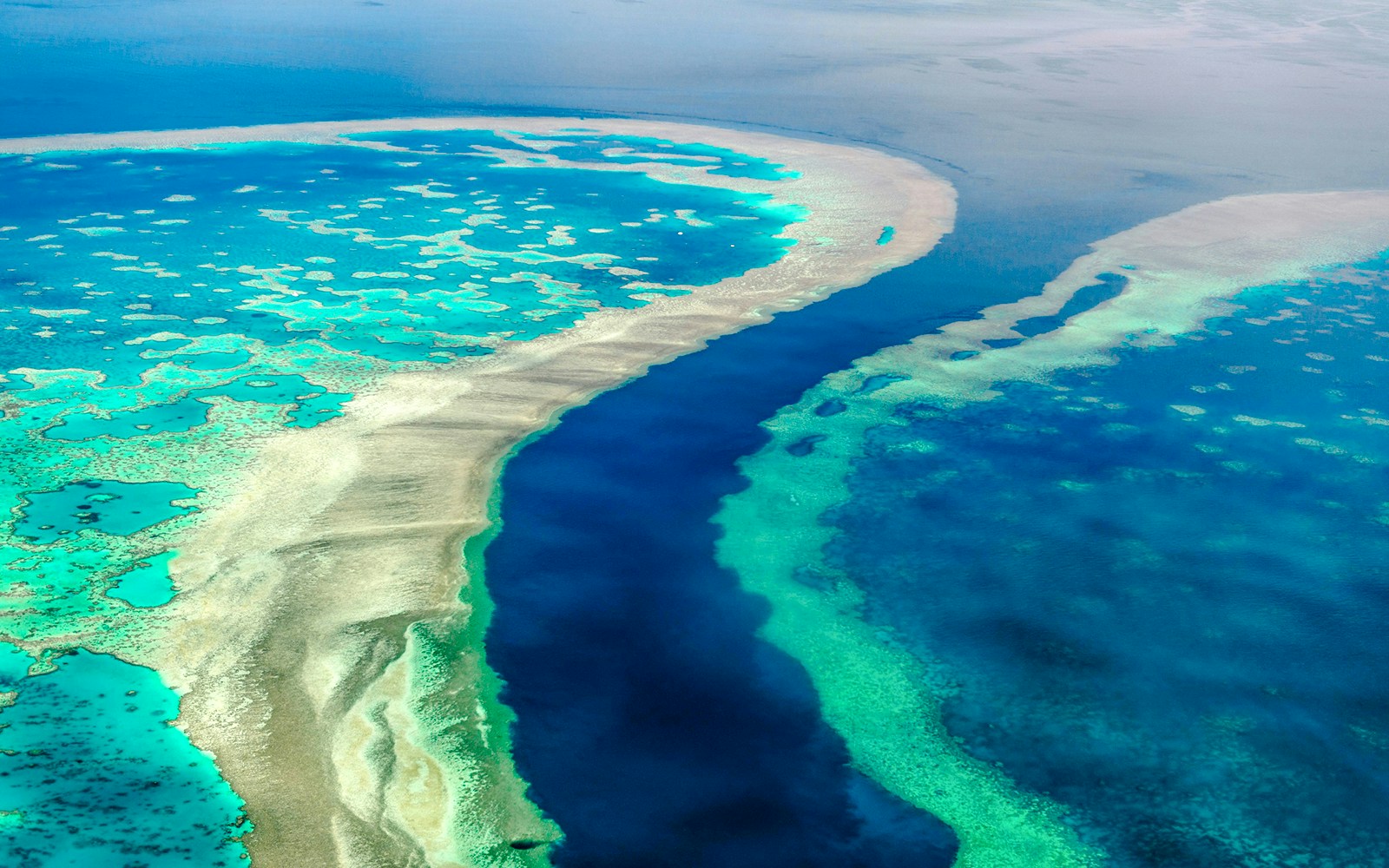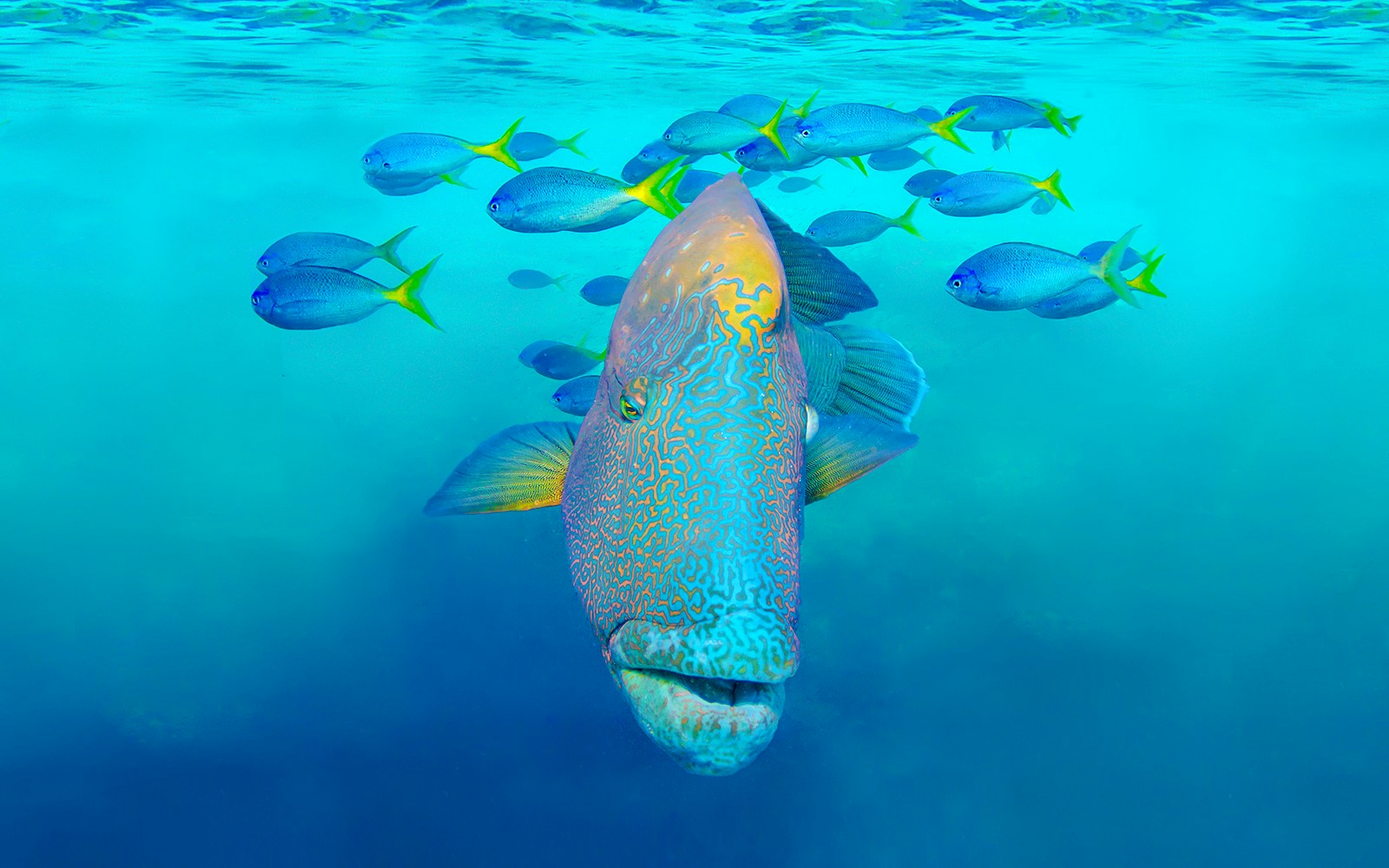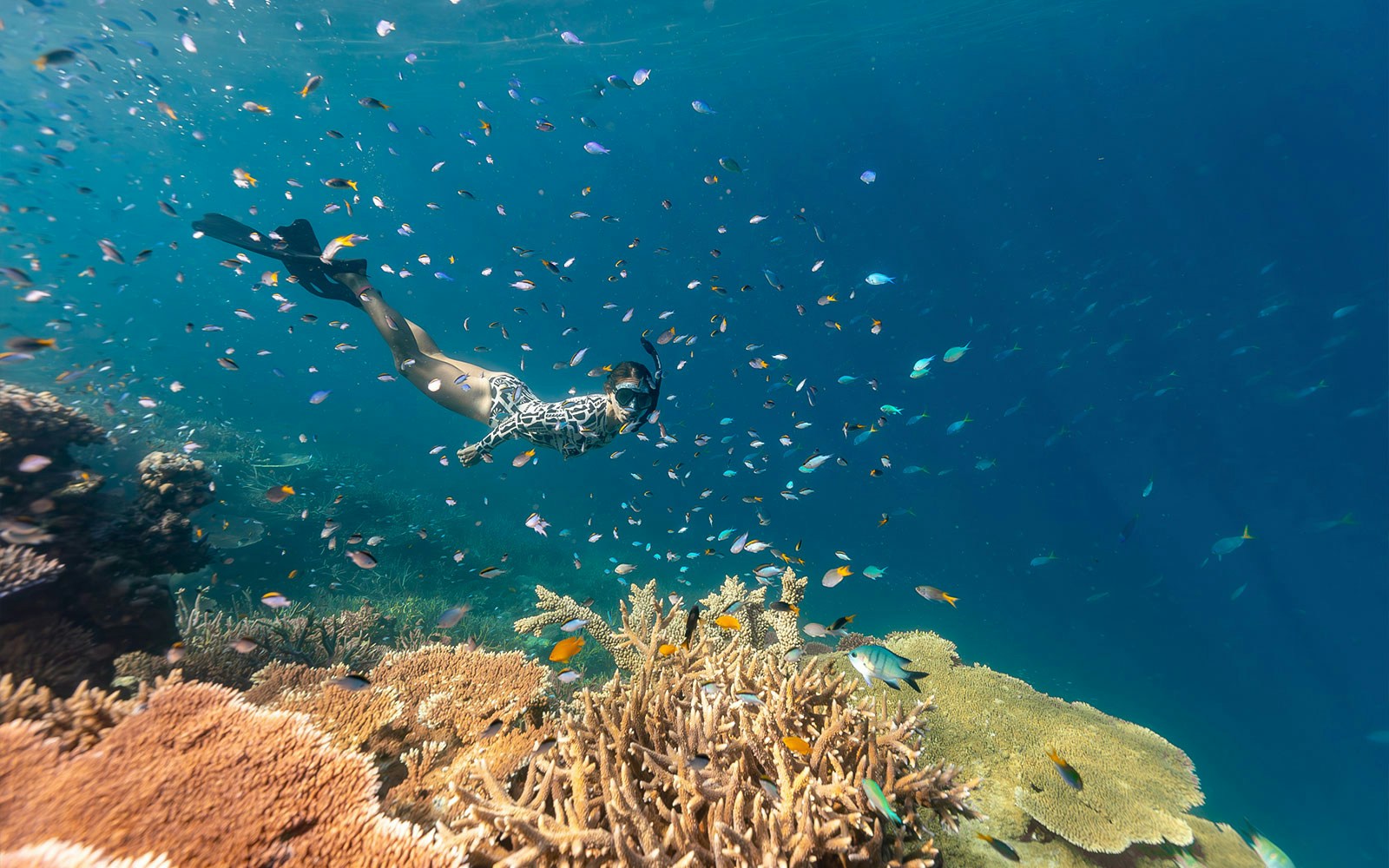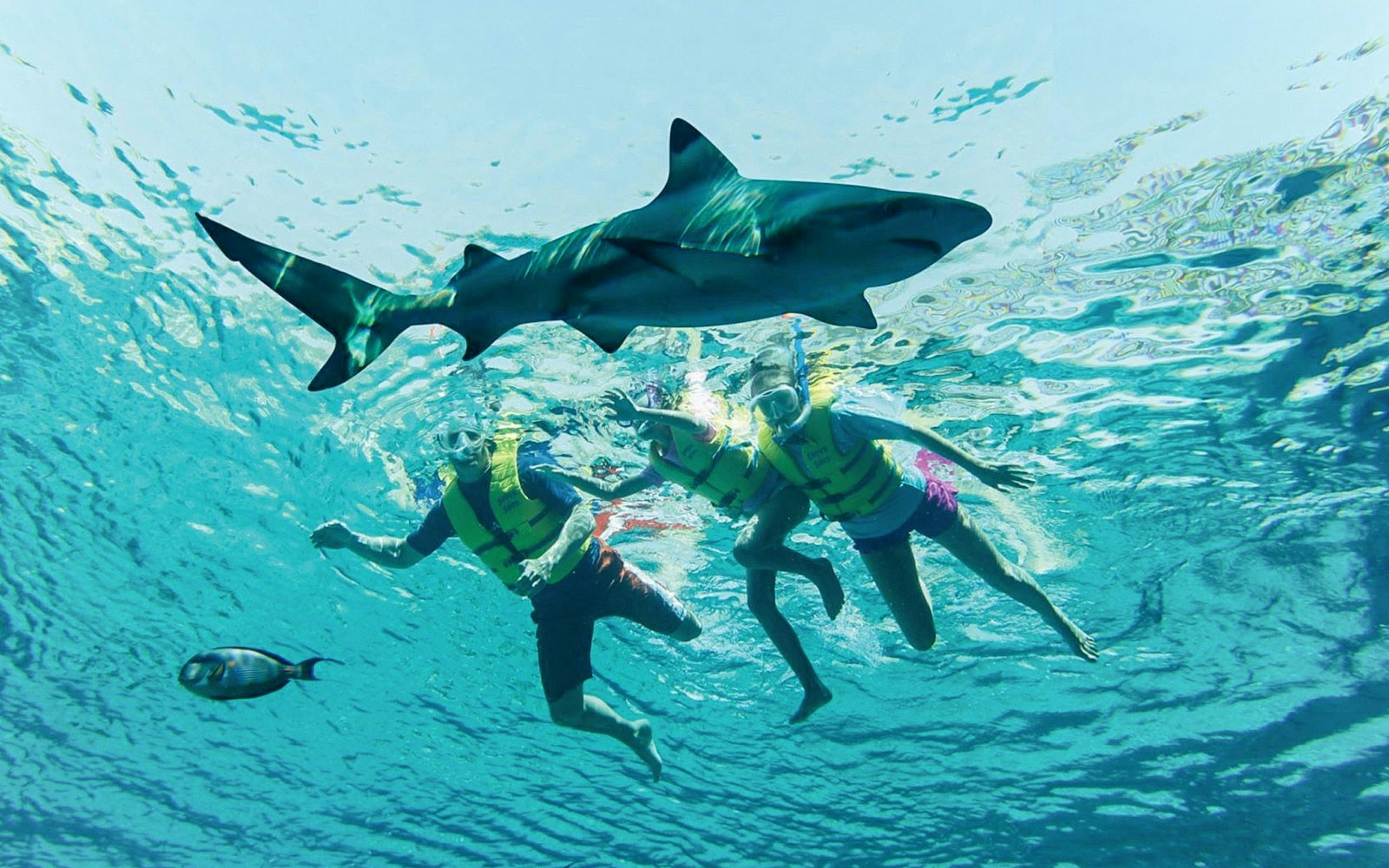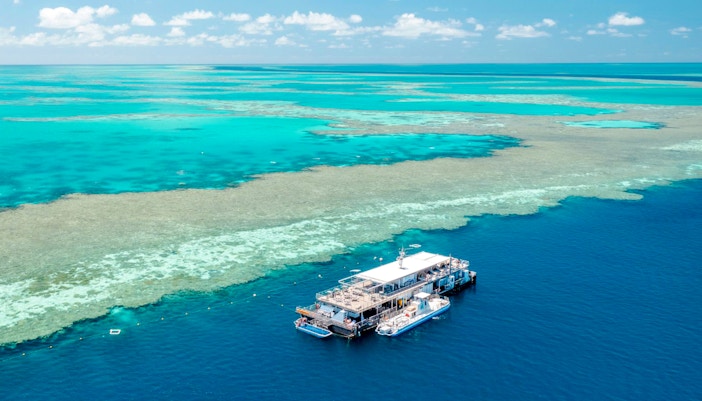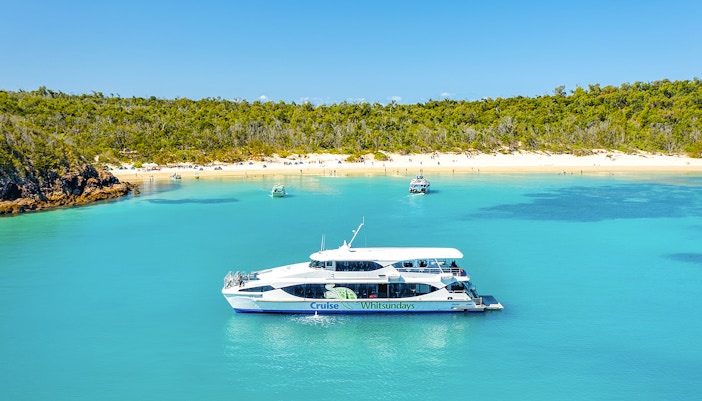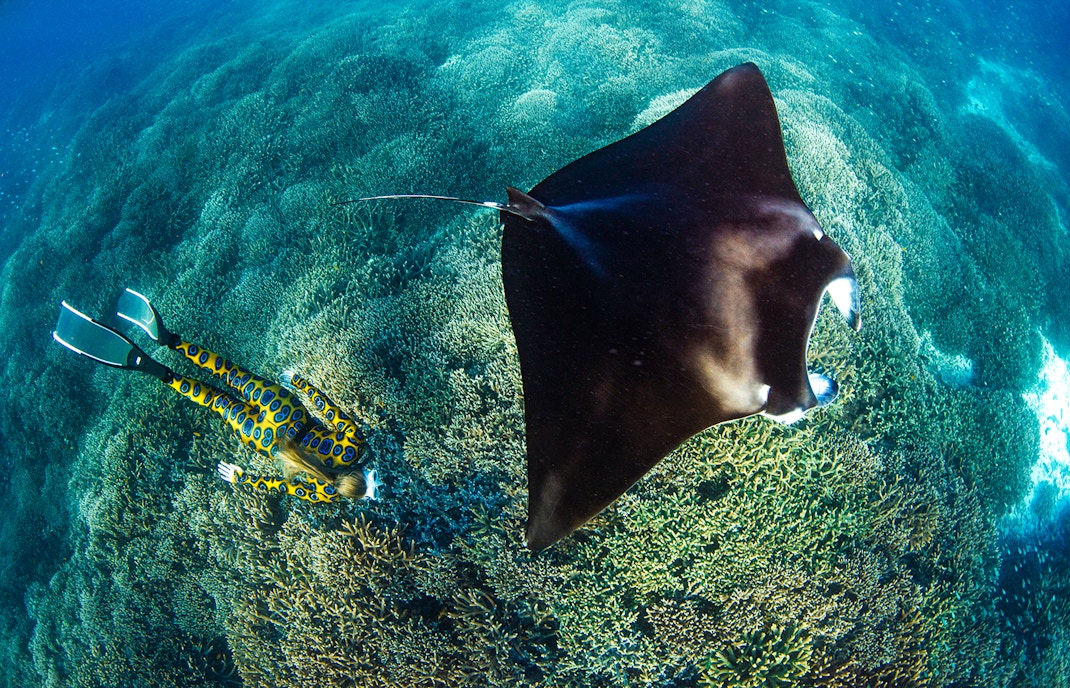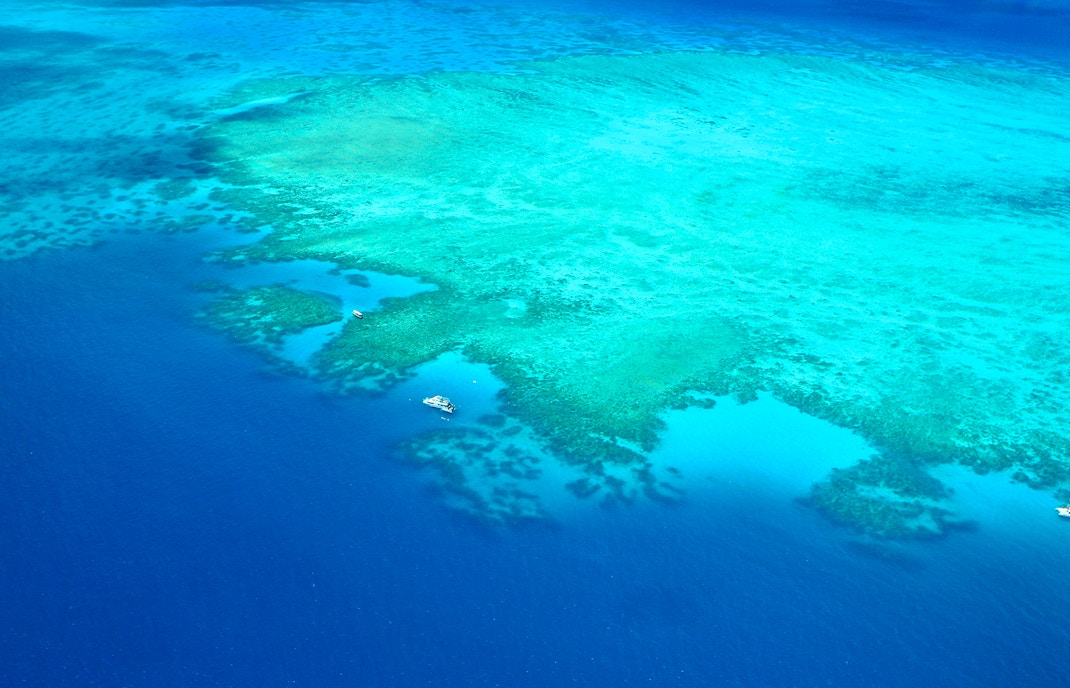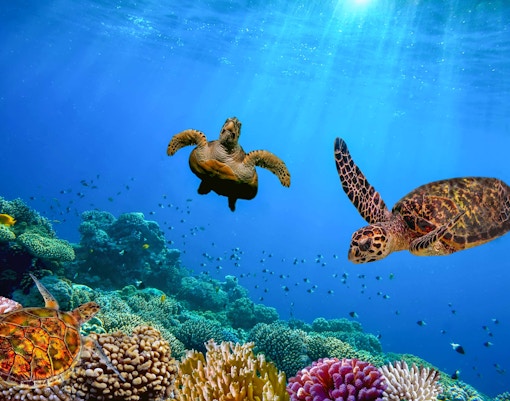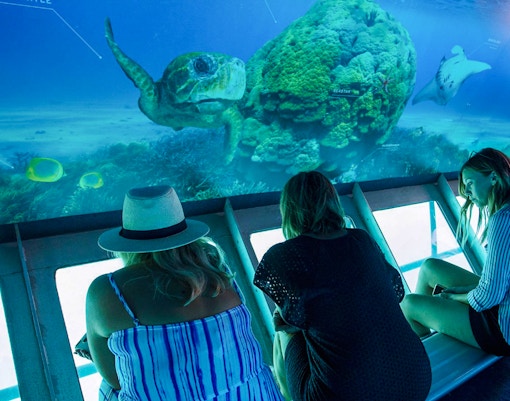At 500,000–600,000 years old, the Great Barrier Reef predates most forests and deserts. The current living reef is about 8,000 years old, rebuilt after the last Ice Age.
Facts that will blow your mind
It’s the world’s largest living structure
Stretching over 2,300 km, the reef surpasses the size of Italy and is about half the area of Texas. It remains the only living thing on Earth visible from space.
It’s not one reef—It’s thousands
The Great Barrier Reef is a network of 2,900+ individual reefs and 900+ islands, spread across a shallow continental shelf in Queensland.
Home to 9,000+ marine species
This includes 1,500 fish species, 6 types of sea turtles, 30 species of whales and dolphins, 133 sharks and rays, and more than 600 species of coral.
Coral spawning looks like underwater fireworks
Each year in November, the reef comes alive during coral spawning—a synchronized release of eggs and sperm that looks like glowing snowfall underwater.
Sharks play a vital role here
From blacktip reef sharks to tiger sharks and hammerheads, these top predators are essential to maintaining the balance of reef ecosystems.
